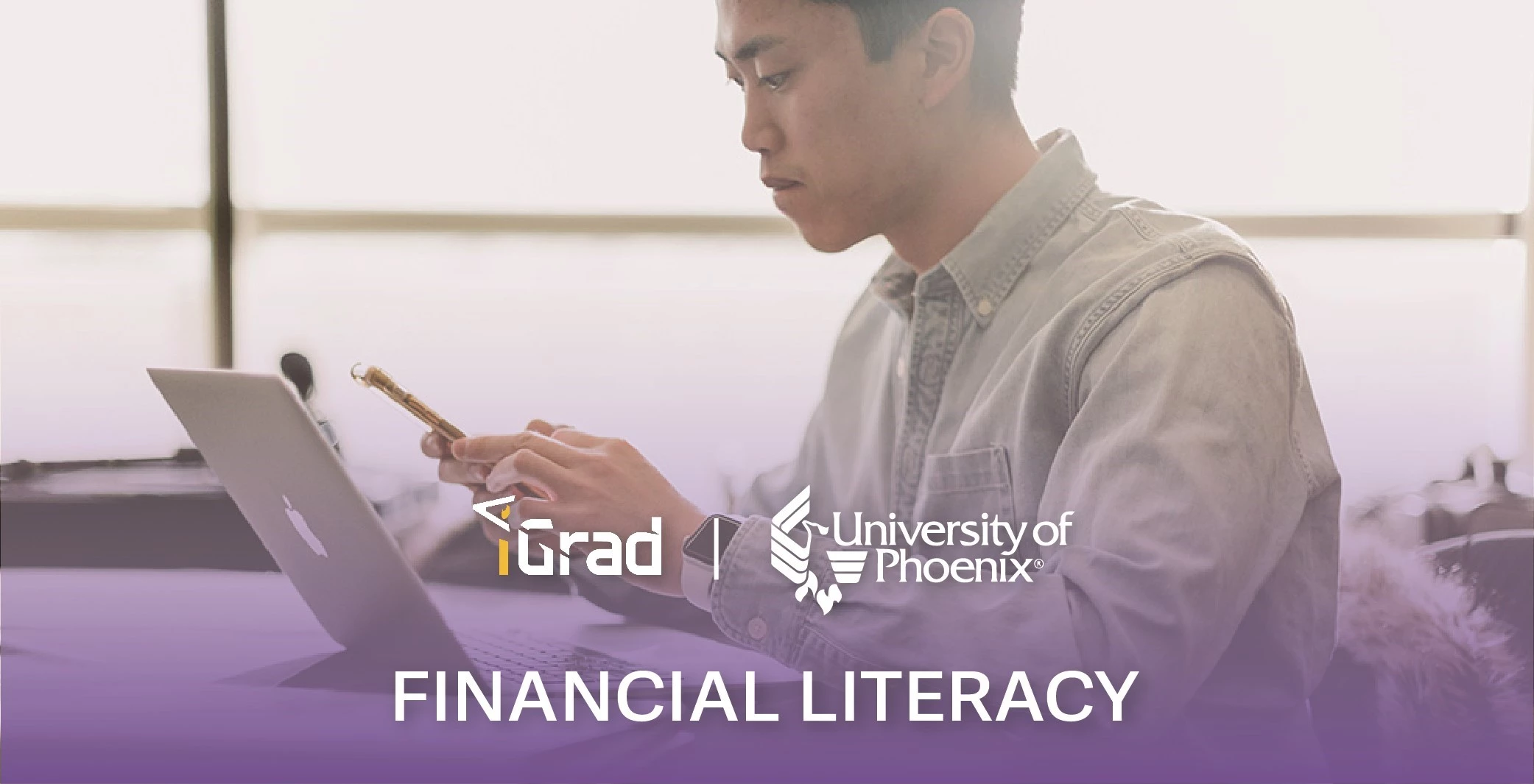When college students are financially well, their schools benefit.
That’s because a financially unwell student body is more likely to:
- Forgo studying¹
- Fail classes²
- Drop classes³
- Drop out of school4
- Engage in unhealthy behaviors like drinking, smoking, and overeating5
Without a doubt, educators want engaged, productive students, which is why helping them with financial literacy is high on the list of priorities and why financial wellness programs have become so popular.
Unfortunately, most college students do not fall into the financially well category. Here are five statistics about your students to help you understand how offering a financial wellness program can help.
1. College Students Are Financially Stressed
A recent survey by Ameritrade6 shows that 74 percent of Gen Zs and 66 percent of Millennials are worried about the ability to pay for college and day-to-day living expenses while in school. Additionally, they are concerned about student loan debt and the economy.
Their anxiety is not limited to their current situation.
Just over half (52 percent) of students surveyed by New America and Third Way7 worry that they will not find a job when they graduate. Four out of ten students worry whether they will be able to pay non-education-related bills in the coming year.
When students have access to a financial wellness program, they get the tools and information needed to become financially healthy. But does increasing financial health decrease financial stress?
In 20119, the iGrad platform reduced user financial stress by 23 percent8.
2. Students Worry About Tuition Costs
College tuition is rising, and students are worried.
According to the College Board, four-year public college tuition has risen 37 percent since 20089. Because tuition prices have risen 19 times faster than the median family income10, most students are unprepared for the cost of college.
Although some students rely on parents to help, Ameritrade found that only 39 percent of Gen Zs and even fewer Millennials (28 percent) planned to do so. Instead, they rely heavily on student loans, financial aid, scholarships, part-time employment, and personal savings.
A financial wellness program can provide students with financial insights into paying for college.
iGrad offers courses in understanding costs associated with college and student loans. It also provides tools such as a student loan snapshot, scholarship search, and student loan affordability calculator.
3. Students Feel Forced to Choose Work or Class
The same Ameritrade survey shows that 60 percent of Gen Zs and 74 percent of Millennials plan to work part-time while in college.
A Georgetown University study, Balancing Work and Learning¹¹, found that 45 percent of students who work put in 30 or more hours each week, and 25 percent work full-time. Working such long hours can impact grades, mental and physical health, and the ability to take internships – all of which will affect their ability to find suitable employment upon graduation.
In addition to understanding the ins and outs of financial aid, these students need a financial wellness program to help them make the most of the money they earn.
The iGrad platform can teach students how to budget, save money, and use credit cards responsibly. It also has articles such as “Grocery Shopping Hacks,” “Smart Shopping: Tips and Tricks,” and “Here are 3 Methods That are Savings Renters Hundreds.”
4. Students are Not Prepared for an Emergency
A recent Money Matters survey¹² found that one of the top three financial stressors for college students is having enough money to last through the semester. This fear appears to be justified. One study¹³ found that three out of four students had run out of money at some point during their school career.
The best solution to this problem would be to build up an emergency savings account. Unfortunately, 63 percent of college students could not cover a $500 emergency14.
A financial wellness program could help students learn to budget and save appropriately.
As iGrad observed, having a savings account with at least three months of living expenses reduces financial stress over 20 percent.
5. Students Don’t Talk About Money
A Merrill Lynch study15 found that American parents are not talking to their kids about money management. High schools are also not helping students learn about personal finance:
- 29 states have no requirement to integrate personal finance into courses needed for graduation
- Only six states require a stand-alone personal finance course
Without access to financial literacy, students are more likely to make poor financial decisions – which, in turn, increases financial stress.
Having access to a financial wellness program can provide them with important information and guide them to create responsible financial habits that they are less likely to figure out on their own.
These student financial statistics show why colleges and universities need to provide a financial wellness program for students. Doing so is the key to improving students’ financial outcomes.
1 - https://news.osu.edu/70-percent-of-college-students-stressed-about-finances/
2 - https://www.acha.org/documents/ncha/NCHA-II_SPRING_2019_US_REFERENCE_GROUP_EXECUTIVE_SUMMARY.pd
3 - https://www.acha.org/documents/ncha/NCHA-II_SPRING_2019_US_REFERENCE_GROUP_EXECUTIVE_SUMMARY.pdf
4 - https://lendedu.com/blog/college-dropouts-student-loan-debt/
5 - https://www.acha.org/documents/ncha/NCHA-II_SPRING_2019_US_REFERENCE_GROUP_EXECUTIVE_SUMMARY.pdf
6 - https://s2.q4cdn.com/437609071/files/doc_news/research/2019/young-americans-and-college-survey.pdf
7 - https://www.thirdway.org/memo/new-polling-from-new-america-third-way-on-covid-19s-impact-on-current-and-future-college-students
8 - https://www.enrich.org/financial-wellness-behavior-change-data-study
9 - https://cew.georgetown.edu/cew-reports/learnandearn/
10 - https://research.collegeboard.org/trends/college-pricing/highlights
11 - https://www.cbpp.org/research/state-budget-and-tax/state-higher-education-funding-cuts-have-pushed-costs-to-students
12 - https://everfi.com/wp-content/uploads/2019/05/MoneyMatters-2019.pdf
13 - https://www.edvisors.com/press/survey-shows-two-thirds-run-out-of-money-03-2016/
14 - https://www.trelliscompany.org/wp-content/uploads/2019/06/Fall-2018-SFWS-Report.pdf
15 - https://www.pbig.ml.com/articles/how-do-families-make-effective-wealth-decisions.html








